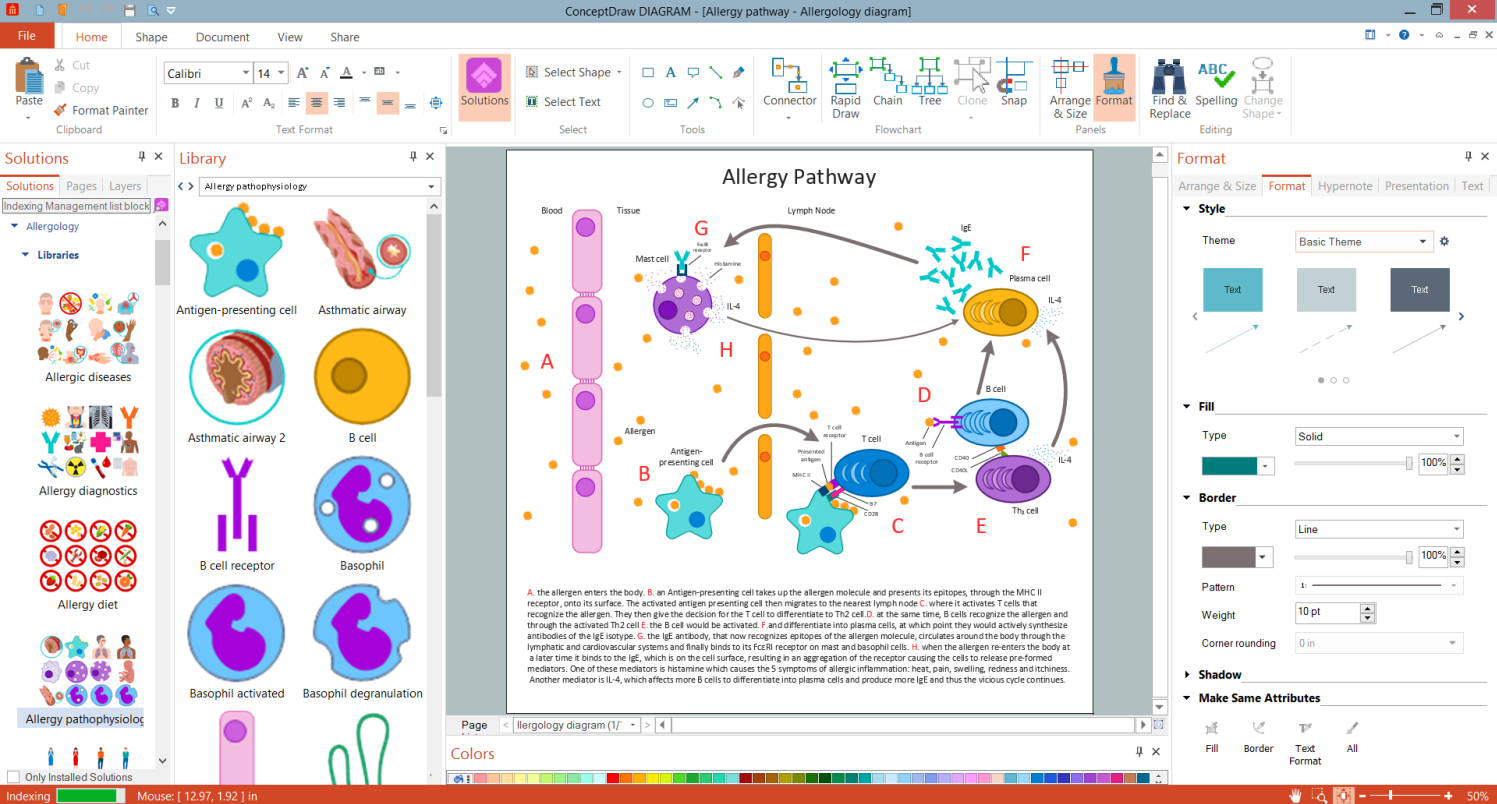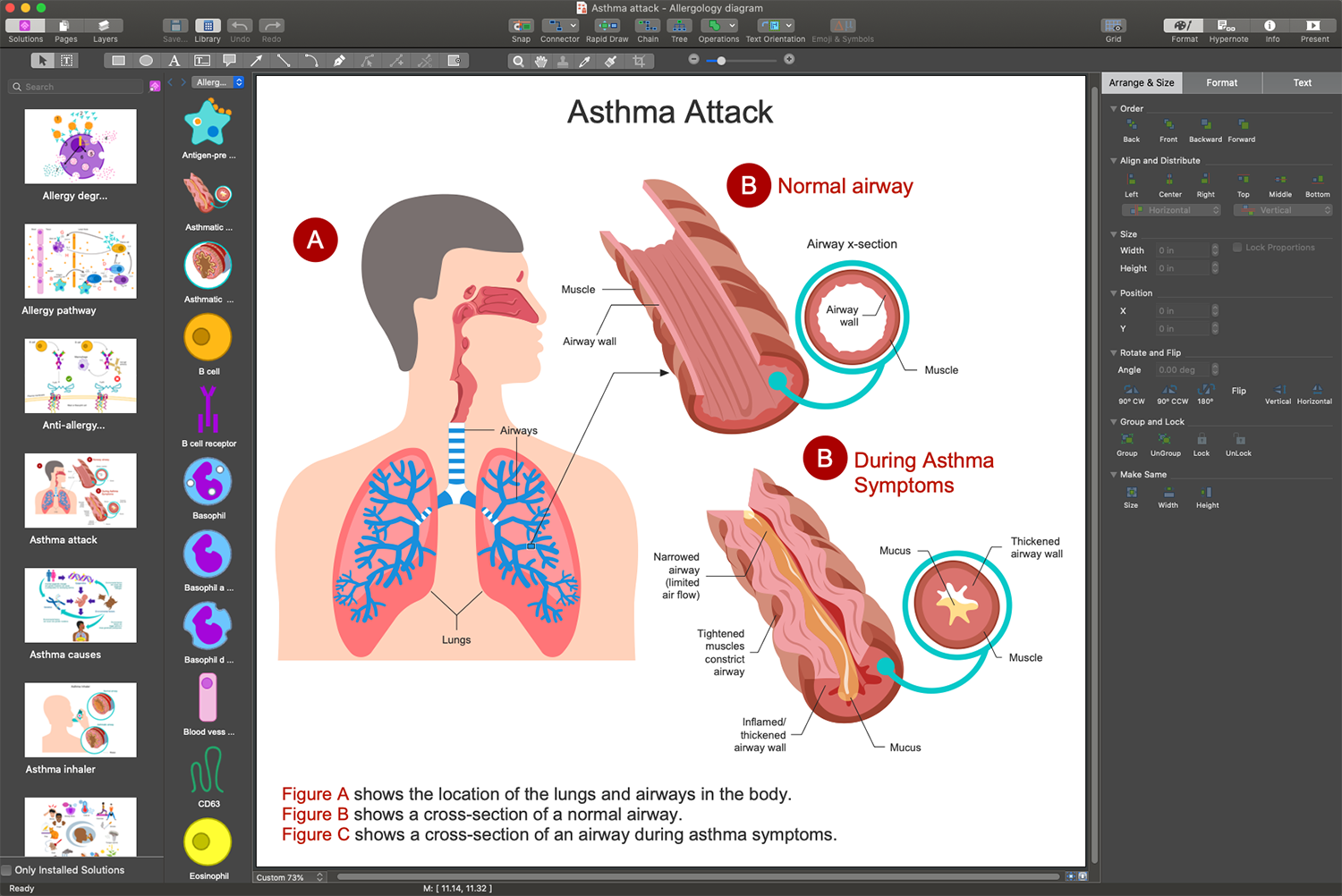Allergology
Allergology is the branch of medicine studying allergies and hypersensitivity of the immune system. It studies the etiology, pathogenesis, reactions, clinical manifestations of allergies, their causes of occurrence. It develops ways of diagnosis, classification, prevention, and treatment the allergic diseases.
Allergology science is closely related to immunology because allergy is an abnormal and specific reaction caused by a disorder of the immune system. It entails the excessive immune response and production of histamines against substances not harmful to most people but causing increased sensitivity in a certain person. They are allergens for him and trigger the body's immunological mechanisms.
Allergological researches are actively conducted since the beginning of the 20th century. The French physiologists C. Richet, M. Arthus and the Russian scientists V. I. Molchanov, P. S. Medovnikov studied the anaphylactic reactions. In 1905 the Russian scientist G. P. Sakharov discovered serum anaphylaxis in guinea pigs. In 1906 the Austrian doctor C. Pirquet introduced the concept of allergy. Later, A. M. Bezredka introduced the concept of anaphylactic shock. At that time the group of illnesses called “allergic” was designated. It includes bronchial asthma, allergic conjunctivitis, sympathetic ophthalmia, allergic rhinitides, sinusitis, laryngitis, dermatoses, and a number of others.
In modern society, allergic reactions and diseases are widespread. In this regard, allergology is a relevant area of science and its development is incredibly important. The increase in the allergies prevalence is associated with the deterioration of the environment, quality of food, and increase in production and use of chemicals.

Example 1. Allergology Infographics Design in ConceptDraw DIAGRAM
Among the manifestations of allergic reactions, there are runny nose, face swelling, redness of eyes and skin, rashes, itchiness, hives, lacrimation, drop in blood pressure, and sharp suffocation in severe cases. The most common are:
- allergic rhinitis occurring in 20% of residents of developed countries;
- food allergies present in 6% of people;
- atopic dermatitis;
- bronchial asthma, the prevalence in different countries is from 1% to 18%;
- anaphylactic shock is the most severe type of allergic reactions found in 0.5-2% of people.
Allergology uses a set of methods to diagnose allergies, including special skin tests and blood tests for the content of specific antibodies. During the study using a skin test, the suspected allergens are introduced into the patient's skin and response is determined. The skin's reaction in the form of redness or a blister confirms the allergy to a specific allergen. The test for specific antibodies called immunoglobulins E (IgE) involves the detection of high levels of immunoglobulins in the blood serum against a certain antigen. It indicates an allergy to the corresponding allergen.
Among the main methods of opposing allergies the prevention of contact with specific allergens is in the first place. Anti-allergic medications are also widely used, they block the inflammatory process and eliminate the allergy symptoms. Immunotherapy is used for the treatment of allergies. These are the vaccinations with allergens starting with a small dose and gradually increasing it. The second type of immunotherapy is the injection of antibodies directed against immunoglobulin E. These antibodies attach to the immunoglobulin and it cannot bind to the allergen.
Example 2. Asthma Attack Infographics in ConceptDraw DIAGRAM
ConceptDraw DIAGRAM software enhanced with the powerful drawing tools of the Allergology solution allows easy designing attractive, visual, colorful, and high-quality allergology infographics, diagrams, illustrations. They are perfect for further use in presentations, official documents, reports, medical journals, review articles, posters, educational materials, and other materials.
Allergology solution is a tool allowing you simple designing of professional-looking allergology diagrams and infographics regardless of your level in fine art. It offers a lot of powerful drawing tools, they greatly easier your designing work. Among large variety of included samples, examples and ready-made vector design elements of allergology-related icons you will definitely find the suited ones. You can choose among Design Elements — Food Allergens, non-food allergens, allergy symptoms, treatment, diagnostics, and many more icons.
Example 3. Anti Allergy Immunotherapy
Illustrate the allergology problems and ways to avoid or cope the allergy. Enlighten audience for the allergy causes and common symptoms, danger of anaphylaxis, its signs and offer tips of first aid. Design your infographics from a blank sheet or based on the included samples.
Example 4. Tissues Affected in Allergic Inflammation
The allergology infographics you see on this page were created in ConceptDraw DIAGRAM software using the Allergology Solution. They successfully demonstrate the solution's capabilities and professional results you can achieve. An experienced user spent 15-20 minutes creating each of these samples.
Use the powerful tools of the Allergology Solution for ConceptDraw DIAGRAM software to create your own infographics and diagrams of any complexity fast and easy, and then successfully use them in your work activity.
All source documents are vector graphic documents. They are available for reviewing, modifying, or converting to a variety of formats (PDF file, MS PowerPoint, MS Visio, and many more graphic formats) from the ConceptDraw STORE. The Allergology Solution is available for all ConceptDraw DIAGRAM users.


